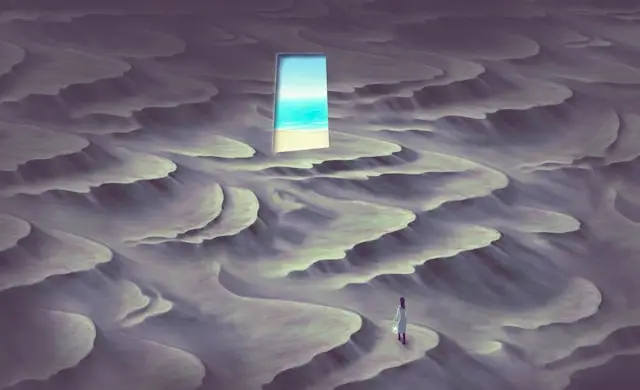The Wisdom of Emptiness: Understanding Non-Duality Beyond Intellectual Concepts
Explore the wisdom of emptiness and discover how non-duality goes beyond philosophical ideas into direct, lived experience. A practical guide for spiritual seekers.
What if the most profound truth isn’t something to grasp, but something to let go of? The ancient teaching of emptiness — particularly within non-dual traditions like Zen Buddhism, Advaita Vedanta, and Dzogchen — invites us to move beyond the intellect and into a deeper experience of reality.
But what does that mean in practice? How do we understand non-duality and the wisdom of emptiness in a way that’s more than just philosophical wordplay?
Let’s explore.
What Is Emptiness, Really?
In everyday language, “emptiness” might sound bleak — like something’s missing or life is meaningless. But in spiritual traditions, emptiness (or śūnyatā in Buddhism) points to a liberating insight: that things do not exist in the fixed, separate way we imagine.
Emptiness doesn’t mean nothingness. It means that everything is interdependent, without a permanent self, and constantly changing. It’s a way of seeing through the illusion of separateness — not to deny life, but to see it more clearly and compassionately.
When we deeply realise this, we open to non-duality: the understanding that subject and object, self and other, are not two.
Non-Duality: Not Just Another Concept
Many seekers encounter non-duality through books or teachers. We might nod along with ideas like “there is no separate self” or “all is one.” But understanding non-duality intellectually is not the same as living it.
Imagine trying to describe the taste of a mango to someone who’s never eaten one. You can talk about it, analyse it, even compare it to other fruits — but until they take a bite, it’s just theory.
Non-duality is the same. We can read countless teachings, but the real shift happens when we experience the emptiness of the ego and the seamless unity of life.
So how do we get there?
The Trap of the Spiritual Mind
Ironically, the mind loves spiritual concepts. It will happily build a whole identity around “being spiritual” or “understanding non-duality.”
But this is just ego in disguise. The mind wants to possess the truth, to own it. Yet the whole point of emptiness is that there is no one to own it. The “you” trying to awaken is the very illusion that needs to dissolve.
This isn’t about judging ourselves — it’s just something to notice. The more we cling to understanding, the more we reinforce the very separation that non-duality points beyond.
Emptiness as Direct Experience
The wisdom of emptiness doesn’t come from thinking about it — it arises when we drop into the present moment, fully and honestly. This can happen in moments of stillness, awe, heartbreak, or even boredom.
Practices like meditation, breathwork, and self-inquiry can help. But it’s not about technique — it’s about intimacy with what is.
Here’s a simple starting point:
- Sit quietly and notice your thoughts.
- Ask gently, “To whom do these thoughts arise?”
- Stay with the question. Don’t rush to answer.
- Let the question open space. Who — or what — is aware?
If you sit with this sincerely, you may glimpse a spacious awareness that isn’t personal, that has no edges. This is the doorway to emptiness.
The Paradox of Non-Dual Awareness
Here’s the twist: once you start to see non-duality clearly, it becomes obvious that it was always this way. Life was never divided. The separation was only in our perception.
This is where language begins to fail. We can say “you are awareness” or “everything is one,” but these are pointers — not truths to hold onto.
Trying to “achieve” non-duality is like trying to find the sky by building a ladder. The very effort takes you further away.
Letting Go of the Seeker
At some point, every genuine spiritual path confronts us with a surprising realisation: there is no final awakening for “me” to get.
The idea of a seeker eventually finding enlightenment is itself part of the illusion. The path dissolves when we see there was never a separate self walking it. There is just awareness, being itself — now, always.
This doesn’t mean life becomes passive or emotionless. On the contrary, when we stop resisting or identifying, we can engage with life more freely and compassionately. Emptiness is not cold detachment — it’s the space where unconditional love flows naturally.
Living Non-Duality in Daily Life
You might wonder, “That’s beautiful, but how does it help with ordinary life — work stress, relationships, grief?”
The answer lies in integration. Non-dual awareness isn’t about escaping life. It’s about meeting it with clarity.
When you notice a strong emotion, can you let it arise without becoming it?
When someone criticises you, can you feel the reaction but stay rooted in awareness?
When something beautiful happens, can you experience it fully, without grasping?
These small moments are opportunities to live the wisdom of emptiness — not by avoiding life, but by fully embracing it without clinging.
Final Thoughts: Beyond the Words
Non-duality is not something you need to “get right.” You don’t need to become a perfect meditator, read every book, or have mystical experiences.
The truth is already here, in the stillness behind thought, in the space between breaths, in the gentle knowing that watches everything come and go.
Emptiness is not a void to fear. It’s the infinite ground of being — open, free, compassionate.
When we stop trying to grasp it, we find we were never separate from it at all.
Extra Resources
Go here to learn more about my online Meditation Course.
Why not treat yourself to a Meditation Retreat in the beautiful Devon Countryside?
This post may also interest you: Dogen Zenji and the Zen Buddhist Tradition: The Heart of Enlightened Practice
Best Wishes,
David.
© D. R. Durham, All rights reserved, 2025.




